IDEA 1 ( Alex)
Idea 1 consists of a system utilizing both an app/website as well as a receptionist/ transportation coordinator. The system will begin when a patient first schedules an appointment. The receptionist will as if they have a Smartphone. If yes the receptionist will ask if they would prefer to get text message and use an app or to receive a phone call. If no it will automatically be a phone call. A few weeks before the appointment there will be a confirmation text or call. With the text, the patient will confirm the appointment and answer if they need transportation help. If yes it will direct them to a webpage or app in which they can enter all of the relevant information such as appointment time, pickup location, insurance information, budget,number of passengers etc. The app will put out all of the relevant transportation options including cost and duration of trip and the patient will select and schedule the method of their choice. If the patient does not have a smartphone or does not choose to use the app a phone call will be made and a receptionist or transportation coordinator will enter the information into the system and book the transportation for them. Patients will also receive a push notification or automated phone call the morning of their appointment reminding them of their pickup time and method of transportation.
| Entice |
Enter |
Engage |
Exit |
Extend |
| Patients are enticed to the system when they first become a patient or try and book an appointment after the program is implemented. Receptionists, Doctors, and transportation coordinators advertise this service and there are pamphlets in waiting rooms and information online. |
Patients enter this service when they are first onboarded into the system. When they book an appointment they can choose to opt out, opt in, or have it on an appointment basis. When patients are asked to confirm an appointment, they enter when they click YES they need transportation help |
Patients engage when they enter all of their relevant information and select and schedule a transportation option for their appointment. |
Patients Exit the program after they successfully make it to their doctor’s appointment and make it back to their desired destination. |
Extend occurs when patients tell their family and friends about the system and encourage them to take advantage of it. |
Idea 2 – Partnership with Uber/Lyft ( Dan and Cole)
Idea 2 involves St. Joseph Health System developing a partnership with Uber. While prices associated with Uber may be a concern, the flexibility and readiness that Uber provides will have enough of a positive impact that SJHS will overcome its current transportation problem. Some barriers to developing such a partnership include billing; while Medicaid patients are covered for transportation in most situations, the amount organizations are reimbursed varies between states. Another issue is the fact that SJHS patients and clients may not have the ability to readily access technology such as smartphones used to request Uber rides. The benefits that having clients use Uber affords healthcare organizations outweighs these barriers, and there are even ways to overcome these barriers. At the following URL, https://tinyurl.com/n4rthzp, a healthcare expert discusses the various ways organizations have undertaken partnerships with Uber and Lyft to overcome problems with transportation. There is an opportunity for SJHS to give patients access to requesting Ubers on their website or through phone calls with receptionists. Our team will conduct further research into the intricacies of billing regulations and any other liabilities or other issues associated with SJHS partnering with a transportation company such as Uber.
| Entice |
Enter |
Engage |
Exit |
Extend |
| While scheduling appointments, patients will be made aware of SJHS’s partnership with Uber and the benefits associated with using Uber. |
Patients will have easy access requesting Uber rides through their smartphones, through the SJHS website, or through phone calls with SJHS employees. |
Uber drivers will be knowledgeable of the reimbursement policies so that rider and driver feel in control of the situation. |
Uber allows SJHS clients to leave reviews, similar to regular Uber users. SJHS should look to develop a survey or platform to assess patient satisfaction. |
Assessing a decrease in missed appointments and word of mouth will validate the usefulness of a SJHS-Uber partnership. |
IDEA 3 – Fleet of vans/ shuttles (Helen and Joe)
Idea 3 involves St. Joseph Health System to provide shuttle services to their clients. The idea is that clients would request a ride from designated pick-up and drop-off locations either online or through the phone. Clients will enter location, date and time, and how many people are riding with them. SJHS would then use its own vehicles to supply rides for its demanding customers. The designated locations can imitate the transpo bus stops or SJHS can cater more towards its clients by using its database to find the ideal drop-off/ pick-up zones. Although resources are tight, it could be a worthwhile investment for SJHS to buy one or two vans as it will pay off more for their patients to get to their appointments than to lose money for every missed appointment. Similar to Notre Dame’s SafeBouND system, volunteers could be in constant contact with a dispatcher for safety, legal, and logistical reasons.
| Entice |
Enter |
Engage |
Exit |
Extend |
| Patients are enticed to examine this service at the time that they schedule an appointment. |
Patients enter this service when they confirm that they are in need of transportation services in order to get to an appointment. |
Patients engage this service when they schedule a pick up by a hospital van/ bus, and fill out all required information to be picked up. They are then picked up from a designated location and taken to their appointment. |
Patients Exit the service after they successfully make it to and from their appointment. |
Patients extend this service by spreading word of it to friends, family, and other people in the community. Through this, the service will become more popular and utilized, allowing all patients to make it to appointments. |
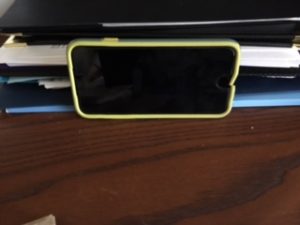
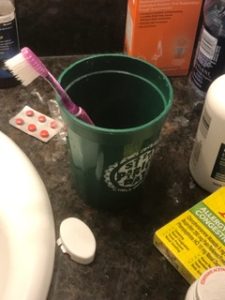

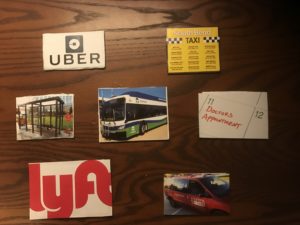
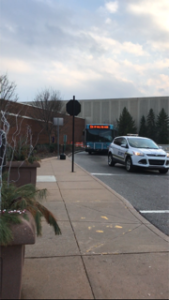 Cole and I rode the South Bend Transpo as part of our immersion experience for our project. We wanted to take a bus from any South Bend location to St. Joseph Regional Medical Center. We got on the bus near the intersection of Ironwood and Route 23. Fortunately, the ride was free since we had our Notre Dame IDs; but a bus ride typically costs $1 for a resident. If someone is handicap, they can request a ride from a van for $2.
Cole and I rode the South Bend Transpo as part of our immersion experience for our project. We wanted to take a bus from any South Bend location to St. Joseph Regional Medical Center. We got on the bus near the intersection of Ironwood and Route 23. Fortunately, the ride was free since we had our Notre Dame IDs; but a bus ride typically costs $1 for a resident. If someone is handicap, they can request a ride from a van for $2.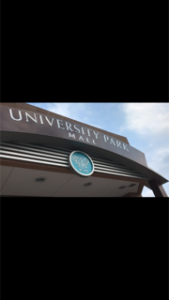 The first bus route did not include St. Joseph Medical Center though. We had to stop at University Park Mall where we had to wait 30 minutes. Fortunately, Cole and I were able to walk around the mall to pass the time; but many people cannot spend any leisure time away from the bus stop because they are sick or absolutely cannot risk missing the bus.
The first bus route did not include St. Joseph Medical Center though. We had to stop at University Park Mall where we had to wait 30 minutes. Fortunately, Cole and I were able to walk around the mall to pass the time; but many people cannot spend any leisure time away from the bus stop because they are sick or absolutely cannot risk missing the bus.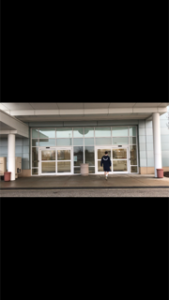 After we boarded the bus at the mall, it made a few stops then finally reached St. Joseph’s. The bus dropped us off at the door and our simulated immersion was over.
After we boarded the bus at the mall, it made a few stops then finally reached St. Joseph’s. The bus dropped us off at the door and our simulated immersion was over.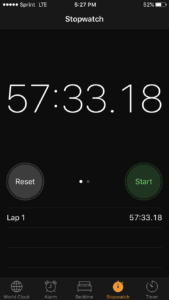 Looking back on our trip on the bus to the hospital, we gained valuable insight into the challenges that many people face while trying to get to medical appointments. Although the bus drivers were very friendly and buses were on time, our trip from bus stop to hospital took 57 and a half minutes. This is especially concerning because many of St. Joseph’s patients come from work and cannot afford the time it takes to go on an hour bus ride, spend an indefinite time at their appointment, and go on another hour long return ride. This immersion will be very helpful as we frame and conduct the rest of our research.
Looking back on our trip on the bus to the hospital, we gained valuable insight into the challenges that many people face while trying to get to medical appointments. Although the bus drivers were very friendly and buses were on time, our trip from bus stop to hospital took 57 and a half minutes. This is especially concerning because many of St. Joseph’s patients come from work and cannot afford the time it takes to go on an hour bus ride, spend an indefinite time at their appointment, and go on another hour long return ride. This immersion will be very helpful as we frame and conduct the rest of our research.